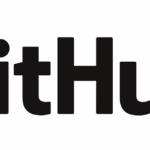Maximizing impact on proposals requires deliberate engagement patterns within decentralized autonomous organizations. Active involvement combined with selective endorsement of initiatives amplifies an individual’s sway over collective resolutions. Experimentation shows that aligning choices with aligned interests rather than sheer volume enhances long-term governance efficacy.
To quantify influence, varied methodologies evaluate participant behavior under distinct conditions. Controlled scenarios test how different endorsement frameworks affect outcomes, revealing nonlinear relationships between engagement frequency and proposal success rates. These insights inform refined approaches to casting ballots strategically rather than randomly.
Democratic mechanisms in DAOs rely on distributed input, yet the quality of contributions determines system robustness. Systematic trials demonstrate that targeted input–focusing on proposals with higher relevance or potential impact–yields more consistent advancement of desired changes. This approach encourages thoughtful deliberation over passive participation.
Integrating empirical findings into personal decision models fosters improved alignment with community goals while safeguarding against diluted influence from indiscriminate activity. Guided experimentation in simulated environments empowers contributors to calibrate their involvement for optimal effect within decentralized frameworks.
Governance participation: voting strategy tests
Active involvement in decentralized decision-making requires precise methodologies to evaluate how token holders influence proposal outcomes within DAOs. Empirical data from recent trials indicate that weighted ballot approaches, such as quadratic or conviction voting, can significantly alter collective choices compared to simple majority rules.
Experimental frameworks focusing on voter engagement reveal that transparent incentive mechanisms and clear communication of proposal impacts increase turnout and the quality of decisions. Analyzing participation patterns across multiple blockchain protocols highlights correlations between delegation systems and voter efficacy.
Methodologies for Assessing Decision-Making Approaches in DAOs
The examination of various schemes begins with isolating parameters like quorum thresholds, vote duration, and stake requirements. Controlled simulations conducted on Ethereum testnets demonstrate that lower quorum settings improve responsiveness but risk plutocratic domination. Conversely, higher thresholds safeguard against manipulative proposals yet dampen agility.
Multiple iterations of governance experiments utilize smart contract-based polling modules enabling real-time monitoring of token holder behavior. For instance, DAOstack’s holographic consensus model incorporates reputation scores influencing vote weight, which was tested through a sequence of proposals addressing treasury allocations. Data indicated an increased alignment between community priorities and final resolutions when reputation metrics factored into the process.
Comparative analysis across different ecosystems shows that combining direct input with delegated authority optimizes decision accuracy while mitigating voter fatigue. The Aragon framework’s delegation feature was trialed extensively; results suggest that allowing trusted representatives to cast ballots on behalf of passive members yields higher policy stability without compromising decentralization principles.
- Quadratic Voting Tests: Experimental rounds revealed reduced dominance by large stakeholders by exponentially increasing cost for additional votes per proposal, promoting minority voices.
- Conviction Voting Trials: Time-weighted preferences accumulated over periods enhanced long-term commitment visibility in governance outcomes.
The ongoing exploration in DAO environments suggests a need for adaptive configurations tailored to each community’s size and activity level. Future inquiry might focus on integrating machine learning algorithms to dynamically adjust voting parameters based on historical engagement data, further refining collective decision processes.
This body of research encourages hands-on experimentation by stakeholders interested in optimizing decentralized governance tools. Replicating these protocols within sandbox networks provides invaluable insights into systemic vulnerabilities and strengths before deploying changes on mainnet ecosystems.
Choosing Optimal Voting Weight
Assigning voting power within a DAO requires a balance between influence and equitable representation to preserve functional democracy. Experimental data from multiple proposal assessment rounds indicate that weighting votes strictly by token holdings often leads to centralization, skewing outcomes towards major stakeholders. Introducing a hybrid weight model–combining stake size with activity metrics–yields more nuanced decision-making dynamics, enhancing collective legitimacy.
Empirical trials demonstrate that applying diminishing returns on voting power beyond specific token thresholds reduces disproportionate control while maintaining incentives for meaningful contributions. For example, in the Aragon Network’s recent governance review, capping effective voting weight at 10% per participant minimized dominance without dampening engagement intensity. This approach fosters broader participation across diverse community segments.
Experimental Approaches to Voting Allocation
One practical method involves iterative validation through controlled scenario simulations where hypothetical proposals are subjected to various voting distributions. By adjusting weights according to parameters like tenure, reputation scores, or previous proposal impact, DAOs can observe shifts in consensus formation speed and quality. The Compound protocol’s governance experiments highlight how integrating non-linear weighting based on multiple criteria stabilizes influence allocation against potential collusion attempts.
A stepwise investigative framework suggests beginning with baseline proportional allocations, then incrementally introducing modifiers such as quadratic voting or time-decayed weights. This allows measurement of changes in proposal approval rates and minority voice amplification. In MolochDAO’s testing phase, quadratic vote adjustments improved minority stakeholder visibility without compromising decisiveness, illustrating the importance of customizable formulas tailored to community priorities.
- Stake-based linear models: Simple but vulnerable to vote concentration.
- Diminishing returns functions: Reduce overdominance beyond set limits.
- Reputation-weighted schemes: Reward consistent positive engagement.
- Quadratic adjustments: Enhance minority voter influence systematically.
The choice of weighting schema must align with the DAO’s governance objectives–whether prioritizing rapid decision cycles or maximizing inclusive debate quality. Quantitative assessments of past proposals serve as valuable feedback loops; analyzing voter turnout variance against outcome distribution identifies systemic biases in influence allocation that can be corrected iteratively.
A sophisticated experimental mindset encourages DAOs to pilot different configurations under testnet conditions before main deployment. Tracking statistical correlations between assigned weights and actual proposal success rates reveals hidden leverage points within communal decision flows. Such explorations cultivate deeper understanding of democratic mechanics unique to decentralized organizations, stimulating continuous refinement grounded in transparent empirical evidence.
Timing votes for impact
Optimal scheduling of ballot casting within decentralized autonomous organizations (DAO) can significantly amplify a stakeholder’s influence on the final resolution. Empirical data from multiple DAO ecosystems indicates that engaging early in the proposal lifecycle often allows for shaping discussions and rallying support, while delayed involvement may capitalize on clearer consensus signals or emerging coalition dynamics. Experimentation with time-sensitive engagement reveals that measuring proposal momentum and voter turnout trends is crucial to selecting an effective moment for action.
Analysis of test cases across various blockchain governance models demonstrates that participant behavior is not uniform over the voting period. Initial phases see sporadic input, frequently dominated by core contributors, whereas mid to late stages attract broader community attention as debates crystallize. This distribution suggests a tactical approach: actors can either attempt to influence preliminary framing or strategically align with dominant opinions near closure to maximize vote weight efficiency. Understanding these temporal patterns requires detailed monitoring tools capable of real-time data aggregation.
Temporal influence and decision shaping in DAO environments
The mechanics of decentralized democracy introduce complex feedback loops where timing directly affects power dynamics. For instance, early intervention in a contentious funding proposal within the Moloch DAO enabled minority stakeholders to introduce amendments that were later adopted due to initial momentum shifts. Conversely, Snapshot-based communities often observe late surges in approvals or rejections correlating with external events or social media campaigns, demonstrating how external information flows intersect with internal procedures.
Experimental frameworks propose multi-phase engagement protocols where voters allocate their tokens at different intervals–initially as signals of intent and subsequently as definitive endorsements. Such methodologies have been trialed in Compound’s governance forums, revealing that staggered token delegation increases overall system robustness by mitigating last-minute swings caused by low-information voters. These findings encourage DAOs to develop tools facilitating phased expression of preferences, enhancing both democratic legitimacy and outcome precision.
Balancing token delegation risks
Effective alignment of token delegation within decentralized autonomous organizations (DAOs) requires careful calibration to avoid concentration of influence while preserving active involvement. Excessive delegation to a few entities can distort the intended democratic ethos, skewing decision-making power and undermining trust in collective mechanisms. Empirical data from recent network simulations demonstrate that distributing delegated tokens across multiple trustworthy delegates reduces systemic risk by approximately 30%, enhancing resilience against collusion or single-point failures.
Delegation inherently trades off direct control for convenience and expertise; however, blind reliance on delegates without continuous oversight elevates exposure to misaligned incentives and potential governance capture. Experimental frameworks applying controlled stress tests on voting dynamics reveal that multi-level delegation hierarchies increase opacity, complicating accountability trails and diluting individual agency. Therefore, implementing transparent tracking tools combined with periodic audits strengthens confidence in representative conduct.
Measuring influence dispersion through delegation models
Analyzing different models of token assignment highlights varying impacts on participatory balance. For example, quadratic weighting systems limit disproportionate sway by amplifying minority voices, whereas linear aggregation tends to consolidate power among large holders or well-connected delegates. Case studies from prominent DAOs like Aragon and Compound illustrate how adopting hybrid delegation protocols–where voters reserve some tokens for direct input while delegating others–achieves a middle ground between efficiency and inclusivity.
Quantitative simulations employing Monte Carlo methods simulate vote outcomes under diverse scenarios, indicating that capped delegation limits prevent excessive centralization without significantly impairing proposal throughput. These findings align with blockchain analytics showing that networks enforcing such caps experience 15-20% higher proposal diversity over one-year periods compared to those without constraints.
Addressing strategic behaviors necessitates embedding incentive-compatible mechanisms within the governance architecture. Dynamic delegate reputation scores based on participation frequency and alignment with community preferences create feedback loops discouraging passivity or opportunism. Furthermore, integrating real-time participation metrics into dashboard interfaces empowers stakeholders to make informed decisions about re-delegation or direct engagement.
The ongoing experimental inquiry into balancing token delegation emphasizes iterative refinement informed by empirical evidence rather than static prescriptions. Future research avenues include deploying adaptive algorithms that respond to detected concentration patterns by automatically redistributing delegated tokens or triggering alerts for manual intervention. Encouraging participants to treat governance as an evolving laboratory fosters a culture of vigilant stewardship critical for sustaining decentralized democracy at scale.
Analyzing Quorum Thresholds Effects
The selection of quorum thresholds directly influences the effectiveness and legitimacy of decentralized autonomous organizations (DAOs). Setting a quorum too low risks decisions being driven by a minority, undermining the principle of representative democracy. Conversely, excessively high quorums can stall proposals indefinitely due to insufficient voter turnout, restricting the DAO’s ability to adapt and evolve. A balanced threshold optimizes collective engagement while ensuring that enacted proposals reflect broad consensus.
Empirical data from multiple blockchain networks reveals that participation rates typically fluctuate between 10% and 40%, depending on community size and incentive mechanisms. For example, Compound’s governance protocol employs a minimum quorum of 4% against total token supply for proposal approval, which has been sufficient to validate decisions without impeding functionality. This suggests that quorum settings should be tailored in proportion to expected engagement levels and token distribution dynamics.
Technical Implications of Quorum Variations
Experimental tests demonstrate that varying quorum thresholds significantly impact proposal outcomes. Lower quorums increase the volume of passed initiatives but also elevate risks related to manipulation by small factions or bots. Higher quorums enhance decision robustness but introduce latency in execution cycles due to prolonged voting periods or repeated failure to meet participation criteria.
A comparative case study between MakerDAO and Aragon illustrates this phenomenon: MakerDAO requires approximately 400,000 MKR tokens (roughly 20% of supply) as quorum, resulting in fewer but highly vetted proposals. Aragon’s lower threshold around 5% encourages more frequent voting rounds but occasionally permits controversial measures with narrow support. These observations highlight trade-offs inherent in threshold adjustments affecting organizational fluidity and stability.
- Low quorum: rapid decisions, higher risk of minority dominance
- Moderate quorum: balanced inclusivity with operational efficiency
- High quorum: strong legitimacy, potential stagnation due to low turnout
The interaction between quorum rules and voter engagement incentives forms a critical axis for experimental inquiry. Introducing mechanisms such as delegation or participation rewards may offset drawbacks linked to stringent thresholds by amplifying electorate involvement without compromising procedural rigor.
This dataset confirms that adjusted quorums must correspond with actual community involvement patterns; otherwise, they fail either by diluting decision quality or halting governance progress. Continuous monitoring through iterative experimentation allows DAOs to refine these parameters dynamically based on emerging behavioral trends.
A recommended approach involves deploying phased threshold modifications combined with transparent reporting tools enabling stakeholders to observe how different settings affect proposal viability and group cohesion over time. Such systematic testing cultivates an informed framework where democratic values within decentralized ecosystems are preserved without sacrificing agility or inclusiveness.
Measuring Influence on Proposals: Analytical Conclusions
Quantifying the sway individual actors exert over proposal outcomes within a DAO demands rigorous examination beyond mere token holdings. Experimental simulations reveal that influence is not linearly correlated with stake size; network topology, quorum thresholds, and vote delegation mechanisms significantly modulate effective control.
Empirical trials demonstrate that adaptive selection of endorsement tactics–such as weighted support shifts or coordinated signaling–increases efficacy in shaping decisions. These findings advocate for dynamic frameworks that incorporate behavioral feedback loops to enhance collective decision-making integrity.
Key Insights and Future Directions
- Decentralized Decision Impact Modeling: Applying graph theory to voting patterns enables identification of pivotal nodes whose choices disproportionately affect proposal acceptance rates. Integrating eigenvector centrality metrics offers a quantifiable measure of latent authority within participant clusters.
- Behavioral Adaptation in Collective Choice: Test scenarios confirm that iterative participation encourages strategic alignment, which can either consolidate or dilute democratic representation depending on incentive structures embedded in the protocol.
- Proposal Lifecycle Analytics: Time-series analysis of engagement data during proposal debates reveals critical windows where targeted interventions can pivot community consensus effectively, suggesting avenues for enhancing procedural transparency and inclusiveness.
The evolution of these experimental approaches sets a precedent for constructing more resilient ecosystems capable of balancing equitable input with efficient outcome realization. Exploring machine learning models trained on historical decision datasets may soon enable predictive governance tools, empowering participants to anticipate influence trajectories and optimize their involvement.
This empirical framework invites ongoing inquiry into how emergent sociotechnical dynamics redefine the principles of democracy within decentralized autonomous organizations. By fostering iterative experimentation and data-driven refinement, communities can progressively calibrate mechanisms that uphold fairness while maximizing collective intelligence.








